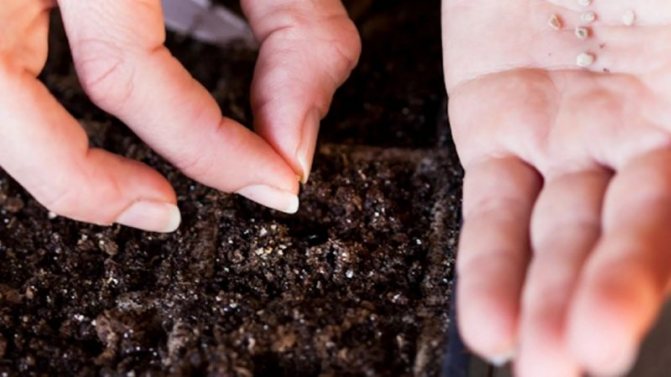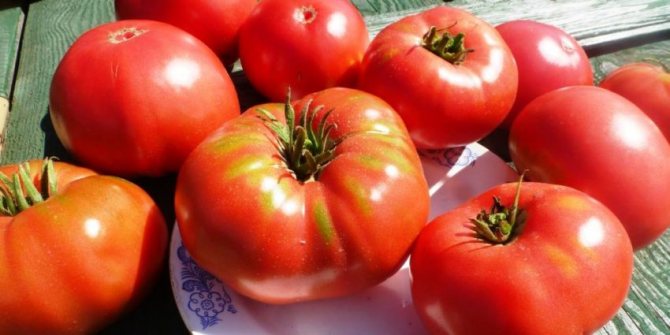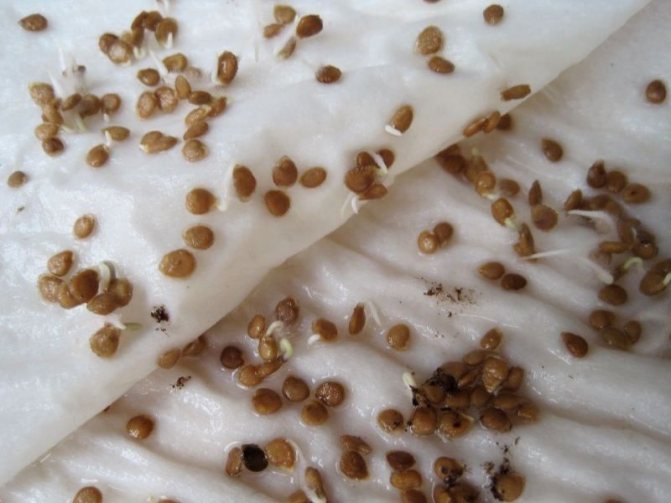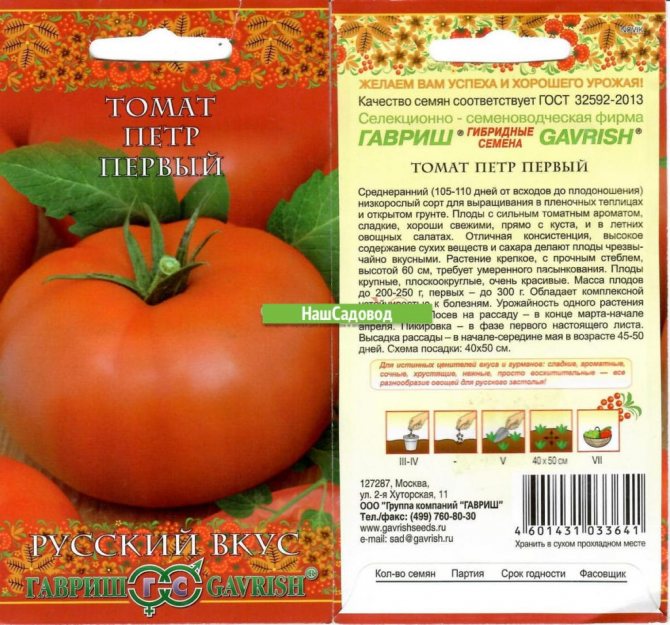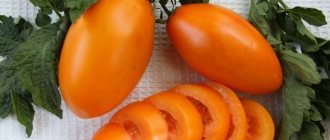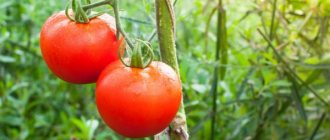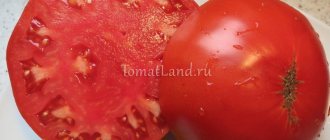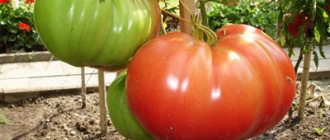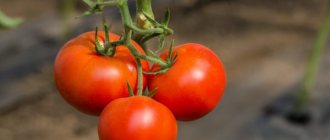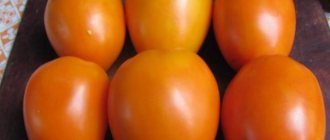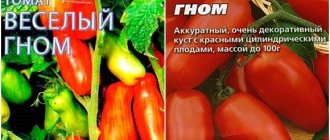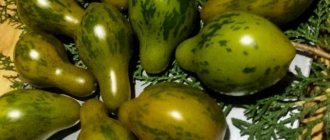Vegetable growing »Tomatoes
0
2041
Article rating
For the middle zone of the country, vegetables are suitable that can be grown in the open field and in a greenhouse. In the Moscow region, they are engaged in the cultivation of late varieties, planting them in the field and on the plots of private farms. And early vegetables and mid-early ones, such as the Peter the Great tomato, should be planted indoors. In higher regions, they are grown in heated greenhouses for early harvests. Under these conditions, it is necessary to purchase seeds of indeterminate varieties that bear fruit for a long time.
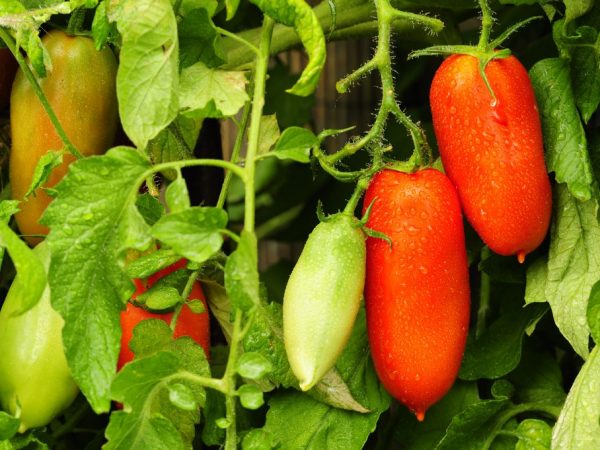
Characteristics of Peter the Great tomatoes
Characteristics and description of tomatoes
Peter the Great is a tomato hybrid of a medium-early ripening period of an indeterminate type, intended for growing outdoors in the southern regions and in a greenhouse in the northern zones of the state. The described tomato variety was bred by Russian breeders and entered into the State Register of Vegetable Crops in 2020.
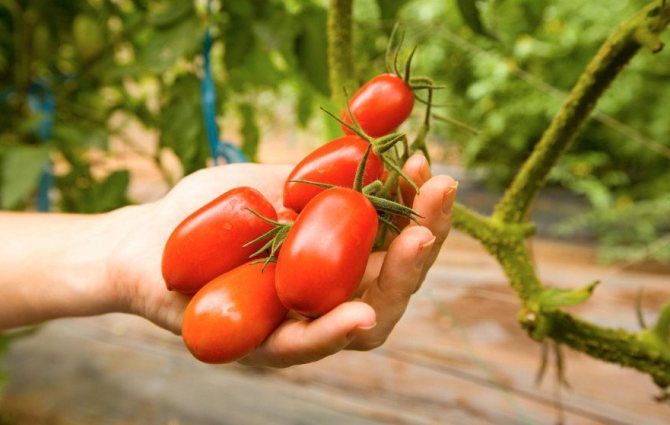

The plant has a high growth rate, its height is about 1.8–2 m. The bushes are powerful, spreading, in need of pinching of the growing point and a garter. The stems of the culture are slightly pubescent, have sparse foliage. The leaves are large, oblong, traditional dark green color. On each cluster in the flowering phase, simple inflorescences are formed, which, after pollination, are transformed into ovaries, and then into fruits.
Each fruit is an oblong-oval berry, up to 12 cm long and weighing 100–120 g. When ripe, the fruits are red or deep crimson. The pulp is quite dense, juicy, with a classic tomato flavor. The skin is hard, smooth, shiny, resistant to cracking and deformation.
Did you know? Red tomatoes contain more nutrients than yellow ones. However, the latter are hypoallergenic and are recommended for those people who have allergic reactions to red vegetables.
The fruits of Peter the Great ripen 100-110 days after the first shoots appear. The yield of the variety is high: from 1 m², subject to the basic rules of agricultural technology, you can collect 8-9 kg of fruit.
Testimonials
“A good variety, one might say perfect. True, in our beds, he did not bear fruit very much. Less than 2 kg were removed from the bush. But all sorts of sores do not stick to him, and this is important. In the greenhouse, however, it brings the maximum return, there you can collect 4.5 kg. This is a mid-early tomato, it is purely greenhouse. If possible, leave 20 bushes and distribute them equally: in the greenhouse and exhaust gas. Look what yield will come out ”(Mila);
“We need to be more attentive to the whims of nature, which directly affect the harvest. The region, the type of soil, and of course the top dressing are taken into account. Recently, there are problems with the weather: the temperature is unstable, then drought, then downpour. So it is better to plant early tomatoes in the garden, and leave Peter the Great for greenhouses "(Igor)
Summer residents prefer to grow the Peter the Great tomato for its great taste and beautiful even fruits. It is capable of producing crops even in the north of our country. The variety is unpretentious, so gardeners who do not have much time can cultivate it.
Pros and cons of the variety
- The hybrid has a number of key advantages that distinguish it from other varieties of tomatoes:
- good yield indicators;
- excellent aesthetic and taste qualities of fruits;
- good keeping quality, the possibility of transportation and long-term storage of tomatoes;
- universal application;
- resistance to verticillary wilting and fungal infections;
- excellent presentation.
- Among the disadvantages of the variety, experienced vegetable growers note:
- the need for compulsory garters of bushes;
- some nuances in care.
Photo
Below is a series of photos of the "Peter 1" tomato variety.
Thus, we can say that by planting the "Peter 1" tomato variety, a lot of time and money will not be spent on its care, and the taste and quantity of fruits will greatly delight any housewife. Salads, ketchups, tomato pastes, preservation - everything will be at the highest level!
Features of sowing and growing at home
The cultivation of tomatoes Peter the Great begins with the cultivation of high-quality and strong seedlings.
What should be the microclimate
In the northern regions or the middle zone of the state, tomatoes of the described variety are grown exclusively in greenhouse conditions or under a film shelter. In the southern regions, it is allowed to plant plants in open soil, but the yield indicators are significantly reduced.
Important! Since the variety is hybrid, it will not work to get high-quality, original seed material from home-cultivated plants.
The variety prefers a rather warm microclimate, with average temperatures ranging from + 21 ... + 24 ° С in the daytime and not lower than + 16 ° С at night. The humidity level should be maintained at 80–85%. The culture also needs to organize 12 hours of daylight hours. If there is a lack of lighting, it is recommended to install additional light sources, for example, conventional phytolamps.
Sowing technology
Peter the Great belongs to the hybrid varieties of the first type, the seeds of which are almost impossible to obtain on their own. Seed material is recommended to be purchased in specialized markets or agricultural firms.
As a rule, purchased seeds do not need to be disinfected, since manufacturers treat them with special preparations against fungi and viruses. However, before sowing, experts advise soaking the seed in a solution of any growth stimulants or using folk remedies - aloe juice or honey.
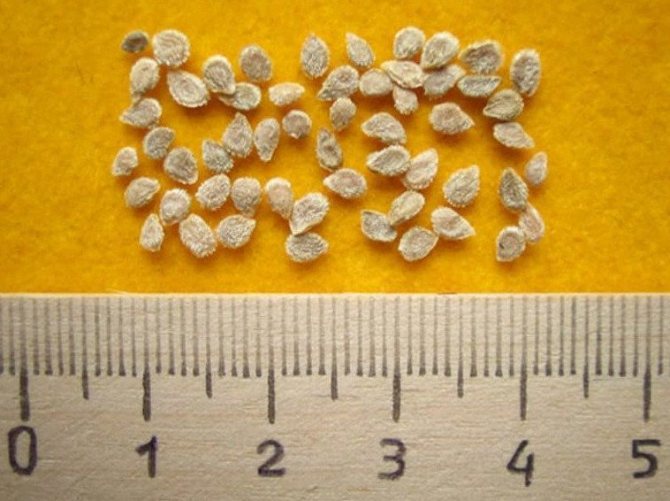

Sowing material for seedlings is carried out 60–65 days before the expected date of planting in the ground, approximately in the first ten days of March. To grow sprouts, you must choose a universal soil for tomatoes or prepare a soil mixture yourself, mixing peat, garden soil and river sand in equal proportions.
Self-made soil must be disinfected by any convenient method:
- ignite in the oven for half an hour at a temperature of + 180 ... + 200 ° С;
- freeze for a day in the freezer;
- spill with a weak solution of potassium permanganate, dry.
The seed sowing technology is quite simple and consists of the following stages:
- soil is poured into prepared containers (plastic boxes, cassettes, peat cups), leveled;
- seeds are placed in holes 0.5–1 cm deep, covered with a small layer of soil;
- the surface of the soil is moistened with warm water from a spray bottle;
- the container with future seedlings is covered with plastic wrap.
We advise you to read when and how to plant tomato seedlings correctly.
Crop care
The quality of future seedlings will depend on the characteristics of caring for it. Before the appearance of the first shoots inside the container, the temperature indicators should be maintained at + 23 ... + 25 ° С during the day and about + 18 ° С at night. It is imperative to organize good, diffused lighting for 12 hours.It is recommended to water the seedlings as needed, avoiding excessive drying out of the soil or waterlogging.
While maintaining comfortable conditions, the first shoots will appear after a week. During this period, the film cover should be removed. When a full-fledged second pair of leaves is formed on the seedlings, they can be transplanted into separate containers.


After 2 months, the seedlings are ready for transplanting to a permanent place, however, 2 weeks before planting in the ground, it must be hardened. To do this, the sprouts are taken out on the balcony or in a room with a temperature of + 14 ... + 16 ° C, first for 1-2 hours, then daily increasing the time until a full day. The day before planting, the seedlings are left at a given temperature for a day.
Timing and technology of planting seedlings
Experts recommend planting seedlings in the ground upon reaching 60 days of age, approximately in the second half of May. The soil in the greenhouse has been prepared since the fall: they dig in, apply organic fertilizers - rotted manure in a dosage per 1 m² of land - 1 bucket of organic matter, and superphosphate in a proportion of 1 m² - 1 tbsp. l. drug.
Learn more about when and how to plant tomatoes outdoors.
Planting seedlings can be done in two ways:
- 3 tomato bushes are planted on 1 m² when the plant is formed into 2 stems;
- 4 bushes are planted per 1 m² when formed into 1 stem.
After planting the seedlings in the ground, it is abundantly watered with settled water and strong supports are installed - wooden pegs or trellises.
How to harden seedlings?
Not everyone has the opportunity to grow seedlings on their own. You can buy it on the market, but then you need to look at the condition of the plants.
You may be interested in: Timing of planting tomato seedlings in open ground and a greenhouse according to the garden calendar Favorable days for planting tomatoes for seedlings in 2020 according to the lunar sowing calendar Favorable days for picking tomatoes in 2020 after germination: timing of picking tomato seedlings in the table by days
Seasoned tomatoes are strong, with dark green leaves.
Weak seedlings, as a rule, are elongated, light, pampered. This is bad for early and middle varieties. Late-ripening tomatoes have additional development time, while the rest do not.
If you plant painful seedlings, the yield will be low.
Hardening young shoots is undoubtedly beneficial, but people who grow tomatoes for sale often do not take this into account. Hardened plants adapt better to changing weather, are not susceptible to ailments and harmful insects.


The ideal soil for growing tomatoes is the fertile black soil on which they used to grow: cabbage, carrots, onions, cucumbers.
Self-collected seeds can be used for planting next season.
Tomato variety care
Caring for the plant of the described variety includes a number of traditional measures, which consist in good watering, high-quality fertilizing, timely pinching, weeding and loosening of the soil.
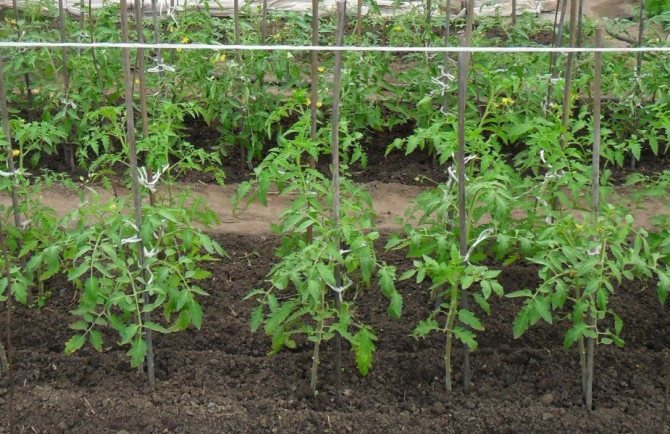

Top dressing and watering
Since the culture is characterized by a high growth rate, it needs good, abundant watering, the need for which is determined by the drying out of the top layer of the soil. When carrying out irrigation procedures, one should focus on the abundance of moisture, and not on their frequency.
Frequent, but shallow watering contributes to the formation of small root shoots, which are not able to fully nourish the plant and saturate the required amount of moisture. Sparse but abundant moisture promotes the development of a strong and powerful root system, which can provide the bushes with the necessary nutrients and moisture. However, during irrigation, water stagnation in the soil should not be allowed, as this will lead to root rot. For humidification, use settled, not cold, soft water.
Important! Watering is recommended in the morning, evening or in cloudy weather.
It is equally important to organize the culture of systematic feeding, as which it is allowed to use organic matter or complex mineral products. Any fertilizers need to be applied only to wet soil, which is why experts recommend combining top dressing with watering.
Fertilization for the first time is carried out 10 days after planting the seedlings. To do this, prepare an infusion of bird droppings or mullein and herbs. The concentrated solution is diluted with water in a ratio of 1:10 and the bushes are watered. One bucket of fertilizer is enough to feed 10-13 bushes. The second portion of fertilizers is applied in the flowering phase of the culture, the third - during the period of fruit formation. In this case, mineral preparations based on potassium and phosphorus are used. At the end of summer, tomato bushes are sprayed with a solution of boric acid, at the rate of 2-3 g per 1 bucket of water.
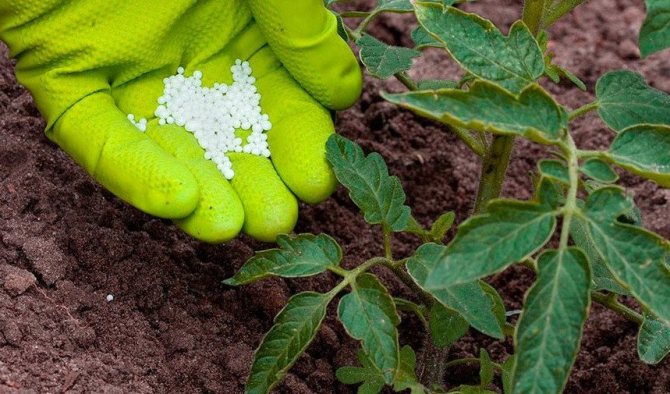

Grasshopping and bush formation
The formation of bushes is one of the mandatory procedures for growing the Peter the Great variety. If you ignore this stage, you will not be able to get a decent harvest of high-quality, large fruits.
Plant formation can be done in two ways:
- One stem... In this case, all side shoots are removed, leaving only one main, strongest stem. The lateral shoots are trimmed every 10 days, after they reach a length of 5–6 cm. In parallel, the first flowering brush is pinched, which makes it possible to reduce the load on the crop and promote better yields.
- Two stems... With this formation scheme, the central stem and the strongest lateral process are left, on which there are at least 5 flowering brushes. The rest of the stepsons are removed regularly, every 7-10 days.
As practice shows, the variety shows the best yield results when the bushes are formed into two stems.
Read more on how to pinch tomatoes in the open field.
Loosening the soil and weeding
1-2 times a week, experienced gardeners advise loosening the soil, which allows:
- saturate the soil with nutrients and enrich it with oxygen, thereby activating the growth of the root system;
- create favorable conditions for the growth of the bush;
- to destroy some pests and parasite larvae living on the root processes.


The first loosening with a deepening of 8-10 cm is carried out a few days after planting the seedlings, the second and subsequent loosening as needed, at least once every 7 days.
In addition to loosening, weeding is a mandatory procedure when caring for tomatoes, the presence of which inhibits the development of the bush and negatively affects the yield. Weeding is carried out regularly, at the first appearance of weeds. It is especially important to destroy parasitic plants before they bloom.
To prevent the appearance of weeds, as well as to preserve moisture in the soil, experts recommend covering the soil under the bushes with a layer of mulch - straw, sawdust, hay.
Did you know? In their composition, tomatoes contain a unique substance - a powerful antioxidant lycopene, which serves to prevent the formation of cancer cells, and also slows down the growth and development of existing ones.
Growing difficulties
Despite the fact that the variety is quite resistant to many viral and fungal diseases, when growing it, novice summer residents may encounter a number of difficulties, which, as a rule, are associated with a violation of the basic rules of agricultural technology. Excessive soil moisture, as well as excess fertilizer can lead to damage late blight, fusarium, powdery mildew... To combat these ailments, as well as for prophylaxis, modern fungicidal preparations are used, for example, "Fitosporin", or folk remedies - Bordeaux liquid.
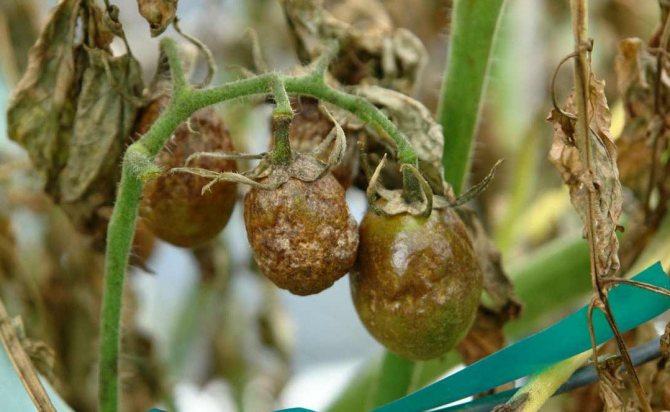

Against parasites such as slugs, whitefly, aphids, insecticidal preparations "Aktofit", "Profi" or folk remedies - soap or garlic solutions, potassium permanganate, a mixture of pepper and mustard, are especially effective.
Simple preventive measures will help prevent the development of ailments and the appearance of pests:
- compliance with crop rotation;
- timely loosening of the soil and destruction of weeds;
- compliance with the rules of watering and feeding;
- systematic professional treatment of bushes with biological products.
It is worth noting that the variety is almost never affected by the causative agent of verticillary wilting.
Also find out what you need to do to make the tomatoes turn red faster.
Disease prevention
Quite often, gardeners are faced with a tomato disease such as gray rot. To avoid such a problem, it is recommended to plant the bushes not too tightly. Mechanical damage to seedlings is unacceptable. Any infested tomatoes covered with short gray fuzz should be removed promptly. Tomatoes can also be struck by a black leg. When this disease appears, the root part of the bushes turns black and dries up. Experienced experts attribute thickening of bushes and excessive waterlogging of the soil to the main reasons why tomatoes have a black leg. As a preventive measure, the following measures are suitable:
- timely airing of the greenhouse;
- moderate watering;
- use of proven planting material;
- sterile soil.
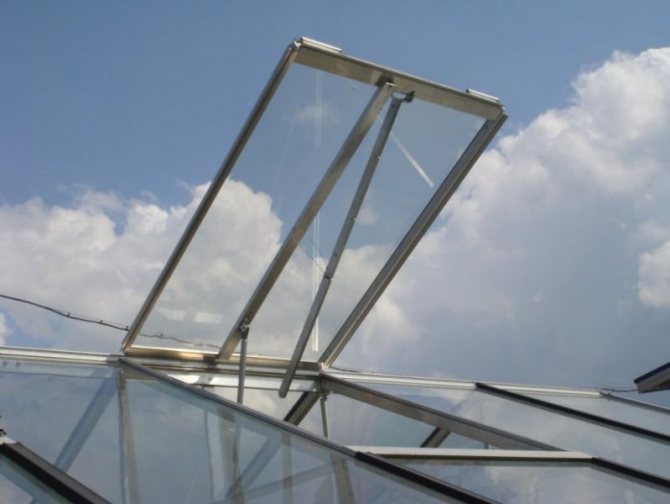

Fusarium can appear at any stage of plant development. With this lesion, the lower part of the leaves turns yellow and withers, and dark contours of the vessels can be seen on the cut of the stem. If such a lesion develops, the tomatoes cannot be cured. In order not to have to destroy tomato bushes, it is necessary to first dig up and disinfect the soil, use healthy planting material and control the acidity of the soil. Experts say that at a pH level of 6.5-7, the development of a harmful fungus is significantly slowed down.
Terms of collection and storage of fruits
Peter the Great refers to plants with a mid-early growing season, harvesting of which begins 100–110 days after sprouting. The first fruits can be harvested as early as August, when they reach maturity. Harvesting of unripe green tomatoes is allowed.
It is recommended to store ripe red-colored tomatoes in a cool, dry place at a temperature of + 10 ... + 12 ° С and a relative humidity of 80%. Ripening tomatoes should be stored in a warm room where they ripen quickly. Tomatoes have excellent shelf life and are able to maintain their presentation and useful qualities for several months.


The fruits are characterized by their versatility in application. They are widely used fresh, for making salads, snacks, ketchups, pasta and sauces. Due to their compact shape and dense structure, they are considered the best option for preserving and preparing various blanks for the winter.
Peter the Great F1 is a hybrid that is distinguished by an excellent presentation of fruits, their excellent keeping quality and high taste. Despite some difficulties in growing, regarding the formation of a bush and pinching, the variety is quite undemanding in care and is able to please even novice gardeners with stable high-quality yields.

